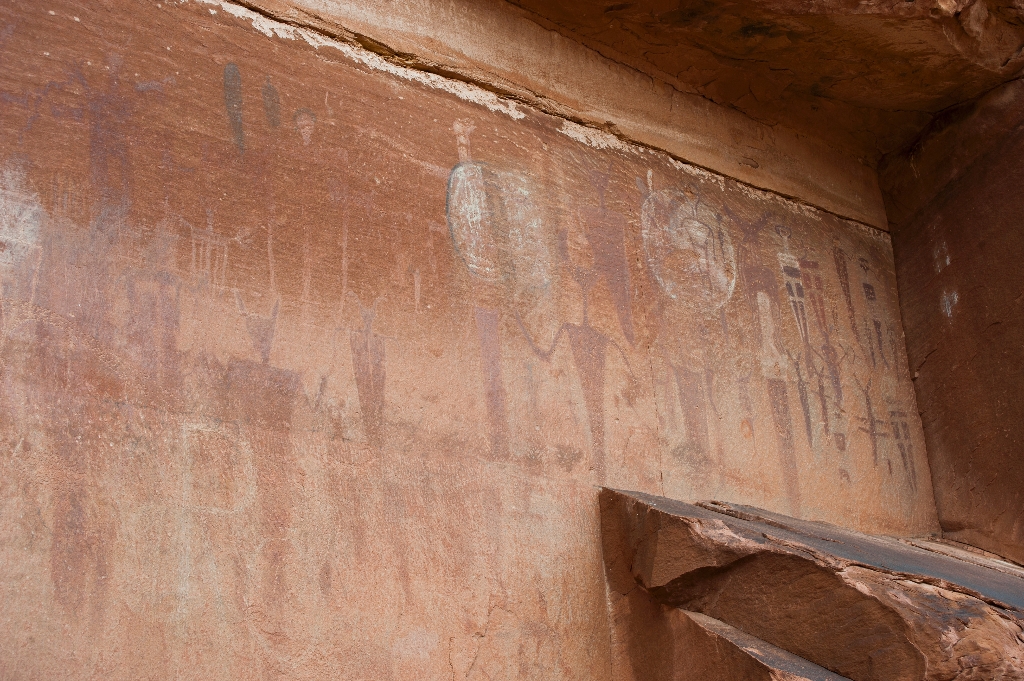
Where Courthouse Wash joins the Colorado River, walk across the small bridge and up a short trail to see a panel of rock markings created by Indigenous travelers.
-
Roundtrip Distance: 0.8 mi (1.4 km)
-
Time: 30-60 min
-
Elevation Change: 60 ft (18 m)
-
Difficulty: Easy
- Hike Description: Park 0.5 miles (0.8 km) north of the Colorado River on US 191. A paved trail crosses Courthouse Wash, then a short walk on dirt and a brief climb leads to a prehistoric panel of rock markings (at the base of the cliffs, facing west).
- Trail Tip: Bring binoculars to see details of the ancient rock markings without having to get too close.
-
Accessibility: The first section of path is paved and level, and the rock markings panel is visible from there. Beyond, the trail climbs up an uneven rock surface.
-
Dogs are not allowed on this trail. Service animals are allowed in national parks. What is a service animal?
Historically, the Colorado River could be crossed here on foot, which made it an incredibly important site for travel and trade. This large and colorful panel of pictographs (painted) and petroglyphs (carved or pecked) displays evidence of people's passage for thousands of years.
Archeologists think that Archaic-era Indians first painted the long, tapered figures of this panel (the "Barrier Canyon Style") between 1,500 and 4,000 years ago. The bright white circular forms that resemble shields were added later, possibly by ancestral Puebloan or Fremont-era peoples up to 2,000 years ago, or Paiute, Ute, or Navajo groups within the last 700 years. Petroglyphs—images pecked, incised or abraded on stone—appear elsewhere on the wall and adjacent boulder, and on the walkway below.
In 1980, this ancient rock markings panel was vandalized. The National Park Service cleaned the panel, and restoration work revealed older pictographs beneath the white shields. While the original brilliant pigments are gone forever, their absence provided an opportunity to use new technologies to gather additional information about the panel. In 2008, as part of the Multi-Spectral Imaging Project, the panel was photographed in the infrared spectrum, and a comparison with a regular photograph revealed figures not previously visible to the naked eye. Archeologists are using this exciting information to establish a new baseline from which to monitor change in the panel and analyze the order in which individual elements were painted.
Remember: Archeological sites are fragile, irreplaceable resources. Never touch rock markings, as oils from your hands can damage panels. Leave all artifacts where you find them, and watch your step to avoid damaging sites. Practice Leave No Trace principles throughout your visit to Arches.
Is there something we missed for this itinerary?
Itineraries across USA


















































